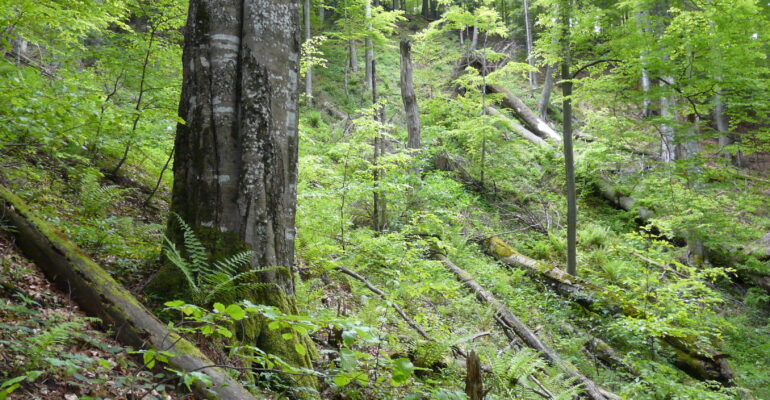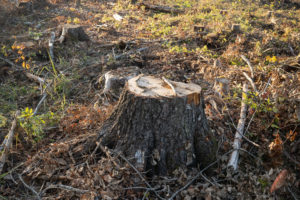Latest report represents scientific consensus on EU forests in energy, climate and biodiversity policies
By Hanna Aho, Climate and forest campaigner at Fern.
Earlier in May the European Academies Science Advisory Council (EASAC) released a report about the multi-functionality of forests and EU policy. EASAC is formed by the national scientific academies of all EU Member States, Norway and Switzerland and is a means for the collective voice of European science to be heard.
The report debunks the myth of forest bioenergy as carbon neutral once and for all. The recommendations are a part of the same story told by the recent Chatham House report on biomass. Both conclude the need to limit subsidies as well as count the emissions from biomass honestly.
Key report recommendations, by policy area
Energy Policy (bioenergy)
- EU policies are currently biased towards the use of forest biomass for energy with potential negative effects on the climate over the short to medium term.
- Using forest biomass for energy requires science based standards to avoid deleterious effects on climate, since the wide range of bioenergy scenarios includes those where burning forest biomass releases significantly more carbon dioxide per unit of electricity generated than fossil fuels over extended periods.
- Scientific knowledge is sufficient to allow the general characteristics of feedstocks to be defined and to avoid the use of biomass with long payback periods.
- European Commission should consider the extent to which large-scale forest biomass energy use is compatible with UNFCCC targets (of limiting warming to 1.5 °C above pre-industrial levels).
- Compared with some other renewable energy sources, the impact of biomass energy on levels of carbon dioxide in the atmosphere is very poor, and renewable subsidies should reflect this.
- To make an accurate assessment of the climate impacts of bioenergy projects, the life cycle assessment changes emerging under the 2016 revisions to the Renewable Energy Directive should include changes in the carbon stock of a forest, and carbon sequestration that will be foregone as a result of forest biomass use. Expanding life cycle assessment to include carbon stock changes may also need to consider interactions between bioenergy demand and forest management.
- With substantial imports of forest biomass taking place into some Member States, allowing biomass energy emissions to be counted as ‘zero’ emission in the consuming country gives a false impression of that country’s progress towards reducing climate forcing, since the emissions are merely shifted to another category or country. The climate impact of greenhouse gas (GHG) emissions is not related to location and thus this separation lacks any significance from a climate perspective.
Climate Policy (Land use, land use change and forestry)
- Forest reference levels for the Member States … should be set on scientifically objective grounds and incentivise climate change mitigation.
- A critical feature in the emerging EU policy is how the future forest reference levels for Member States are specified. These should be set on scientifically objective grounds; otherwise there is a danger that inappropriate specification of forest reference levels will lead to emission transition between different EU categories without any real decrease in adverse climate effects. In the worst case, such perverse transitions could be promoted by public subsidies.
- The economic principle that ‘cleaner earns, polluter pays‘ suggests that carbon storage should be subsidised and emissions from forest bioenergy should be fully accounted for and controlled through appropriate means.
Biodiversity & forest management:
- Diverse ecosystems are often more efficient in providing climate change mitigation.
- The small areas of remaining old growth and virgin forests (currently only 2 per cent of Europe’s forests) need to be protected and other forests managed with greater attention paid to biodiversity.
- We can identify several climate change adaptation and mitigation strategies, including continuous cover forestry, conversion to native broadleaf tree species, and increased rotation times, which are largely consistent with biodiversity goals, improving habitat availability in managed forests, and furthermore provide almost equal or sometimes higher revenue for forest owners.
As the scientists point out there is hope in reconciling different interest by changing forest management methods. By doing so biodiversity and climate goals could be in harmony with sometimes even an increase in revenues for forest owners.
Only by changing policy and management methods it is possible to secure healthy forests that can support our future society in the EU. To this end Fern supports making LULUCF accounting more robust, substantial amendments to the biomass sustainability criteria of the Renewable Energy Directive (REDII) and enhanced action in order to conserve and restore European forests for generations to come.
Banner photo: © Hanna Aho





